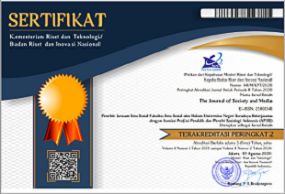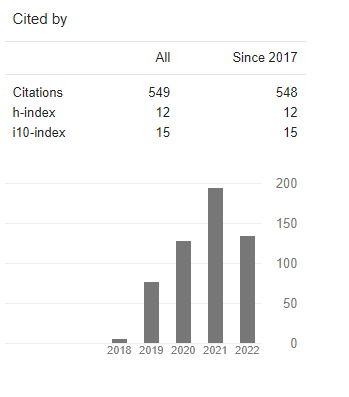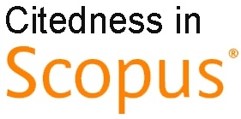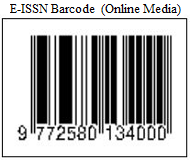The Development of Village Data and Information Management through the Innovation Diffusion
DOI:
https://doi.org/10.26740/jsm.v6n2.p566-590Keywords:
e-monografi desa, diffusion, innovationAbstract
Public services, including in villages, have begun to be directed and adjusted to the concept of data services based on information, communication, and technology (ICT). E-Monografi Desa is expected to be able to present village data profiles used to determine the characteristics of potential resources, the development of all development sectors, as well as development problems in each village and sub-district. The research was conducted in Kedung Peluk Village, Candi District, Sidoarjo Regency, using a qualitative approach. The data collection techniques used by the researcher include interviews (interviews), Focus Group Discussions (FGD), and Literature Studies. We used Rogers' Diffusion of Innovation theory to analyze the phenomena and issues discovered. Based on the results of the FGD, there are also inputs to improve the design of the E-Monografi Desa application for users.
References
Ahmad, J., & Hardianti. (2020). Adopting incremental innovation approaches in the digitalization of village government services. JKAP (Jurnal Kebijakan dan Administrasi Publik), 24 (2), 145-162. https://doi.org/10.22146/jkap.54028
Creswell, J. W., & Creswell, J. D. (2018). Research design: qualitative, quantitative, and mixed methods approaches (5th ed.). Sage Publication. https://cmc.marmot.org/Record/.b57516595
HM, P., & Senjaya, B. (2021). Implementation of the Policy for Capacity Building of Village Apparatus in Merangin Regency, Jambi. The Journal of Society and Media, 5(1), 218. https://doi.org/10.26740/jsm.v5n1.p218-238
Jahromi, Mohmmad Jafar Haddadpour, and Manteghi, Nikzad. (2012). Innovation Process In Decision Making Model To Choose An Appropriate Power System. Procedia Technology Volume 1 2012 https://doi.org/10.1016/j.protcy.2012.02.107
Lee, H. et al. (2020). Research on innovation in the way of working of local governments. Journal of Digital Convergence, 18(12), 21-28. https://doi.org/10.14400/JDC.2020.18.12.021
Palm, A. (2022). Innovation systems for technology diffusion: An analytical framework and two case studies. Technological Forecasting and Social Change, 182(February), 121821. https://doi.org/10.1016/j.techfore.2022.121821
Rajak, Manindra, and Shaw, Krishnendu. (2021). An Extension of Technlogy Acceptance Model for mHealth User Adoption. Technology in Society Volume 67 https://doi.org/10.1016/j.techsoc.2021.101800
Roe, M., Spanaki, K., Ioannou, A., Zamani, E. D., & Giannakis, M. (2022). Drivers and challenges of internet of things diffusion in smart stores: A field exploration. Technological Forecasting and Social Change, 178, 121593. https://doi.org/10.1016/J.TECHFORE.2022.121593
Rogers, E. M. (1983). Diffusion of innovations third edition. (3rd ed.). The Free Press.
Schallmo, D. R. A., Brecht, L., & Ramosaj, B. (2018). Process Innovation: Enabling Change by Technology Basic Principles and Methodology: A Management Manual and Textbook with Exercises and Review Questions.
Sheth, A., & Sinfield, J. V. (2022). An analytical framework to compare innovation strategies and identify simple rules. Technovation, 115(August 2020), 102534. https://doi.org/10.1016/j.technovation.2022.102534
Sugiyono. (2017). Metode Penelitian Kuantitatif, Kualitatif, dan R&D. cv alfa beta.
Sukendar , & Hasanah, B. (2020). Capacity and service innovation in implementation government of village in serang district, indonesia. Indonesian Journal of Social Science Research, 1(1), 1-9. http://dx.doi.org/10.11594/ijssr.01.01.01
Supriyanto, Eko Eddya. (2016). Kebijakan Inovasi Teknologi Informasi (TIK) Melalui Program Elektronik Government dalam Meningkatkan Kualitias Pelayanan Publik di Indonesia. Jurnal Ilmu Pemerintahan : Kajian Ilmu Pemerintahan dan Politik Volume 1 https://doi.org/10.24905/jip.1.1.2016.141-161
Sururi, A. (2017). Inovasi Kebijakan dalam Perspektif Administrasi Publik Menuju Terwujudnya Good Public Policy Governance. Spirit Publik: Jurnal Administrasi Publik, 12(2), 14. https://doi.org/10.20961/sp.v12i2.16236
Wolfe, R. A. (1994). Organizational innovation: review, critique and suggested research directions. Journal of Management Studies, 13(May), 11.
Yildirim, Ercan., et.al. (2022). A Multi-Stage Decision Making Model For Determining A Suitable Innovation Structure Using An Open Innovation Approach. Journal of Business Research Volume 147 Page 379-391 https://doi.org/10.1016/j.jbusres.2022.03.063
Downloads
Published
How to Cite
Issue
Section
License
Copyright (c) 2022 The Journal of Society and Media

This work is licensed under a Creative Commons Attribution 4.0 International License.
 Abstract views: 421
,
Abstract views: 421
, PDF Downloads: 546
PDF Downloads: 546












